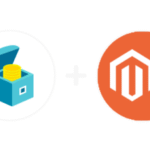
Last Updated on May 14, 2025 by Rida Gul
Starting a payment company is an ambitious endeavor that requires careful planning, regulatory compliance, technological investment, and strategic marketing. Here’s a step-by-step guide to help you navigate the process of launching your own payment company.
Table of Contents
Understanding the Market
Before diving into the technical and operational aspects, it’s crucial to understand the payment industry landscape. Conduct market research to identify your target audience, their needs, and the competitive environment. Look into existing payment or digital banking solutions, their strengths and weaknesses, and potential market gaps that your company could fill. Understanding these dynamics will help you carve out a unique value proposition for your payment company.
Developing a Business Plan
A comprehensive business plan is essential for laying out your vision and roadmap. Your business plan should include:
· Executive Summary: A brief overview of your business idea and objectives.
· Market Analysis: Insights from your market research.
· Product Description: Details of the payment solutions you intend to offer, including currencies, countries and payment types.
· Revenue Model: How you plan to generate revenue (e.g., transaction fees, subscription models).
· Marketing Strategy: How you plan to attract and retain customers.
· Financial Projections: Expected costs, revenue, and profitability.
Legal and Regulatory Compliance
The payment industry is heavily regulated to ensure security and consumer protection. Research the regulatory requirements in your target markets. Key regulations might include:
- Licensing: Obtain necessary licenses from financial regulatory authorities, for example, E-money or Payment Institution licence for the EEA region, MSB registration in Canada.
- Compliance: Adhere to regulations such as PCI-DSS (Payment Card Industry Data Security Standard) and AML (Anti-Money Laundering) laws.
- Data Protection: Ensure compliance with data protection regulations like GDPR (General Data Protection Regulation) if operating in or with customers from Europe.
Consult with legal experts to navigate these complexities and avoid potential pitfalls.
Building Your Technology
Technology is at the heart of any payment company. You need a robust, secure, and scalable platform to handle transactions. You have the option to build your own payment solution or choose a pre-built option. You can either develop a custom system from scratch or opt for a white-label solution that you can buy or rent as a Software-as-a-Service (SaaS). You should consider the following components:
· Payment Gateway: If you plan to provide payment processing or card acquiring services, payment gateway will be the core system that processes transactions. It should support multiple payment methods (credit cards, debit cards, digital wallets, etc.).
· Core Banking software: In case you plan to provide digital banking services, like accounts, transfers, currency exchange, prepaid cards, you need to have a reliable core banking system. It will manage all transactions, clients, provide comprehensive accounting and reporting.
· Security: Implement advanced security measures such as encryption, tokenization, and fraud detection systems or rely or ready solutions available on the market.
· User Interface: Develop user-friendly interfaces for both merchants and customers. Ensure seamless integration with various e-commerce platforms.
· API Integration: Provide APIs for merchants to integrate your payment solution into their websites and apps and integrate with other payment services or Banking as a Service providers.
You can build these systems in-house or partner with established technology providers.
Setting Up Operations
Establishing smooth operational processes is vital for delivering a reliable payment service. Key operational aspects include:
- Customer Support: Set up a robust customer support system to handle inquiries and issues promptly.
- Merchant Onboarding: Develop a streamlined process for onboarding new merchants, including verification and compliance checks.
- Transaction Monitoring: Implement systems for real-time monitoring and reporting of transactions to detect and prevent fraud.
Creating Partnerships
Forming strategic partnerships can help expand your reach and capabilities. Consider partnerships with:
- Banks and Financial Institutions: For processing payments and accessing broader financial networks.
- Technology Providers: To enhance your platform with additional features and security measures.
- Merchants: To expand your user base and market presence.
Marketing and Growth Strategy
An effective marketing strategy is essential to attract customers and grow your business. Focus on:
- Brand Building: Create a strong brand identity that resonates with your target audience.
- Digital Marketing: Utilize SEO, content marketing, social media, and online advertising to reach potential customers.
- Sales Strategy: Develop a sales strategy for onboarding merchants and building long-term relationships.
- Customer Retention: Implement loyalty programs and excellent customer service to retain existing customers.
Testing and Launching
Before going live, conduct thorough testing of your platform to ensure it handles transactions accurately and securely. Perform:
- Beta Testing: Roll out your service to a small group of users to gather feedback and make necessary improvements.
- Stress Testing: Test your system under heavy loads to ensure it can handle peak traffic.
- Security Audits: Conduct security audits to identify and fix vulnerabilities.
Once testing is complete, you can proceed with a phased launch, starting with a soft launch to a limited audience before a full-scale rollout.
Scaling Your Business
Post-launch, focus on scaling your operations to handle growth. This might involve:
- Expanding Features: Continuously improve your platform with new features and payment methods.
- Entering New Markets: Expand geographically to tap into new customer bases.
- Enhancing Infrastructure: Upgrade your technology infrastructure to support higher transaction volumes and improve performance.
Monitoring and Adapting
The payment industry is dynamic, with evolving technologies and regulations. Continuously monitor market trends, customer feedback, and regulatory changes. Stay agile and be ready to adapt your business model and strategies to remain competitive.
Conclusion
Starting a payment company involves navigating a complex landscape of technology, regulation, and competition. By following these steps—understanding the market, developing a solid business plan, ensuring regulatory compliance, building robust technology, and implementing effective marketing strategies—you can establish a successful payment company that meets the needs of your target audience and scales for future growth.

























